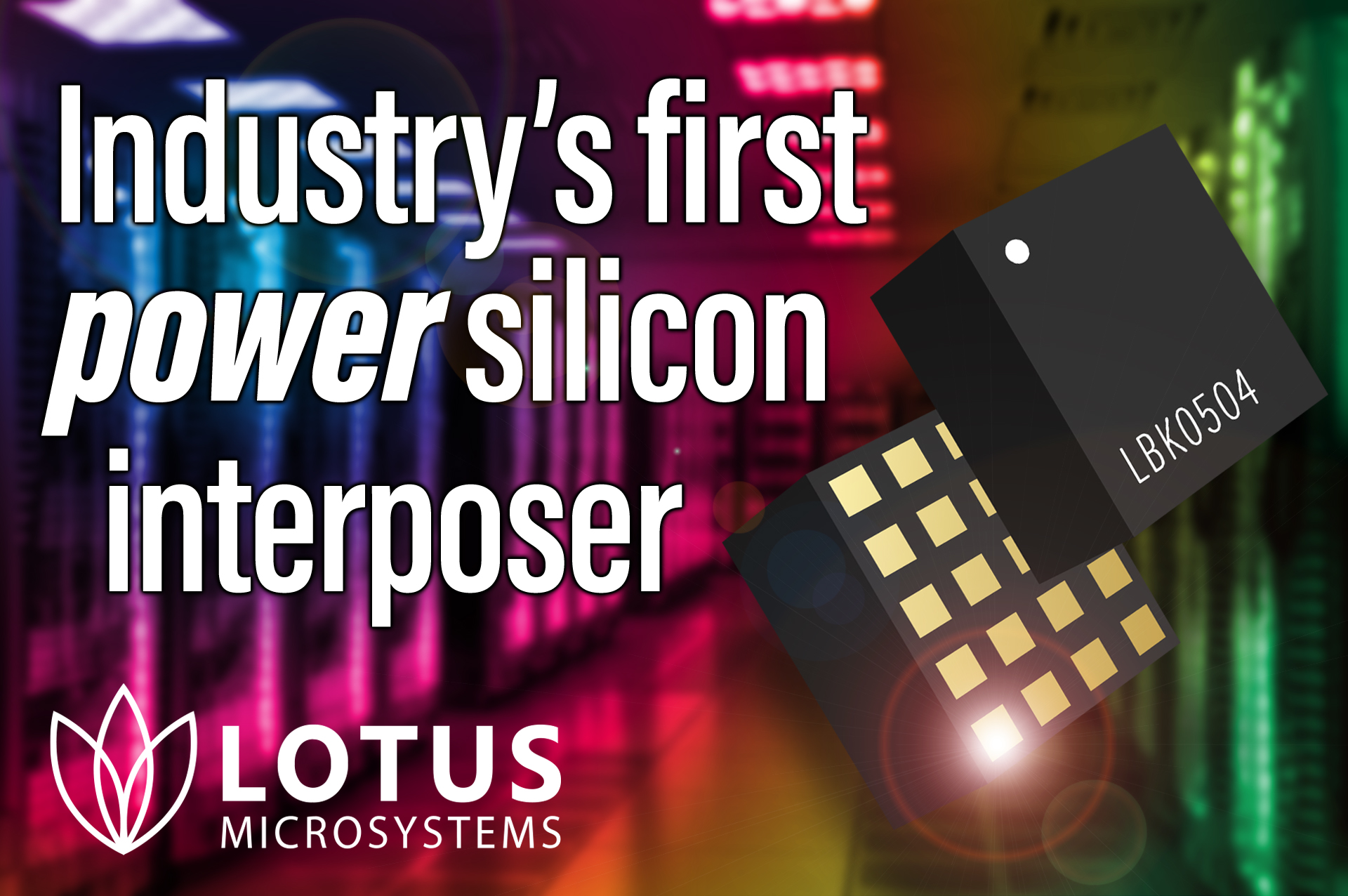Power modules are quite common, but what about power modules that are co-packaged on silicon? What happens when you take chiplet interposer technology and modify it for power electronics? Lotus Microsystems knows…
In the first of two introductory interviews with a very disruptive power electronics manufacturer, ipXchange chats with Hans Hasselby-Andersen, CEO at Lotus Microsystems, which has developed the industry’s first power silicon interposer. This packaging technology enables smaller power modules that exhibit higher power densities with improved thermal management. So…
What is a power silicon interposer?
As Hans explains, silicon interposers are mainly used for connecting multiple chips or chiplets on the same substrate. They are mostly seen in logic- and signal-type settings to, for example, connect on-chip memory to the processing core.
The concept of a power silicon interposer arose as the Lotus Microsystems team saw the requirement for connecting power components in the same way. This would enable power modules with much smaller form factors, in a similar way to consolidating IP blocks in a wireless SoC, for example.
Lotus Microsystems designs power modules which make use of its power silicon interposer technology. This enables co-packaged power electronics on the same silicon substrate. Hans’ team also has great expertise in via technology so that power can be routed vertically as well as laterally within a module. These interposers are designed to withstand the high voltages and currents required for leading power supply applications.
Why co-package power electronics on silicon?
By housing the components on a silicon substrate, Lotus Microsystems can achieve far better thermal performance than power modules assembled using a typical FR4 circuit board material. The thermal conductivity of silicon is more than 150 times that of FR4.
Additionally, photolithography for silicon is an extremely well-developed technology. This allows Lotus Microsystems to create compact and precise designs within a small footprint. The mechanical stress is also greatly minimised when there are temperature changes as all components in the module are made from the same materials.
Where would you use Lotus Microsystems’ power modules?
At the moment, Lotus Microsystems is focussing on the computing and datacentre markets. These require the large current capabilities and compact size offered by its power modules, which can be used to supply power to anything from optical modules to the GPUs and CPUs themselves.
Lotus Microsystems’ technology poses a great power solution to support the high power densities required in modern AI applications. This might require thousands of amps, and Lotus Microsystems is ready to deliver these power levels in a very compact package.
In addition to its power modules, Lotus Microsystems also produces thermal bridge components. These interposers can be used to guide heat away from a component without affecting the electrical characteristics of the circuit.
Lotus Microsystem’s thermal bridges are thermally conducting but electrically insulating. This enables designers to completely rethink how they manage heat dissipation on a PCB.
Getting started with Lotus Microsystems
Lotus Microsystems offers off-the-shelf miniaturised buck and boost converter modules, as well as the SMT thermal jumpers. That said, it also designs custom solutions to serve the requirements for individual applications. Hans recommends getting in contact online or meeting at a trade show like PCIM or CES to discuss your application.
Lotus Microsystems is excited to work with engineers in many applications where high power density and thermal management is key. Follow the link below to our user-defined board page to get in touch.
Next time, we’ll be taking a true deep dive into the power silicon interposer technology with Ahmed Ammar, Head of Product and Co-Founder at this exciting company. The conversation is quite the mindblower…
Keep designing!
You must be signed in to post a comment.

Comments
No comments yet